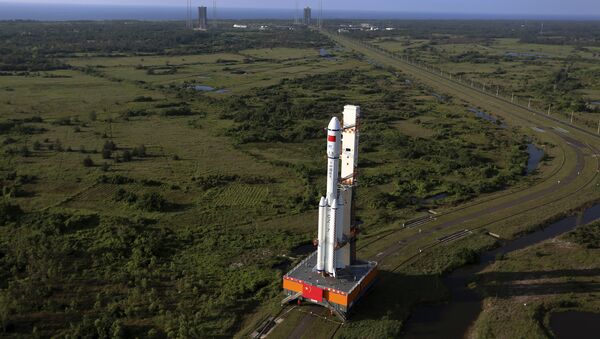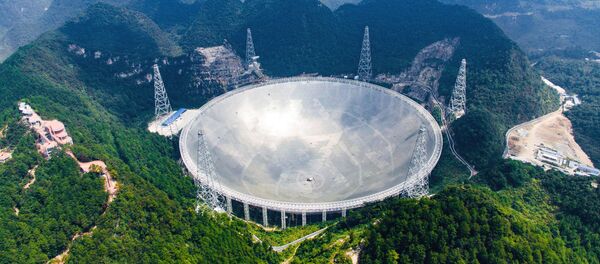Earlier on Thursday, the Tianzhou-1 cargo resupply spacecraft lifted off on a Long March-7 Y2 rocket from the Wenchang Satellite Launch Centre in the southern island province of Hainan.
The spaceship is set to dock with the Tiangong 2 space laboratory, also known as "Heavenly Palace 2."
China launches 1st cargo spacecraft #Tianzhou1 into space, closer to building a space station by approximately 2022 https://t.co/H3gYf0csy2 pic.twitter.com/SW7umstvT3
— China Xinhua News (@XHNews) 20 апреля 2017 г.
"Tianzhou-1's 6.5 [metric] tons of payload [capacity], in comparison with the American spacecraft's [2.5 ton capacity], will allow China to more efficiently operate its space station," Alexander Zheleznyakov of the Russian Academy of Astronautics told Sputnik.
Touting Tianzhou-1's "relatively small weight for its class," Zheleznyakov recalled that China has yet to disclose Tianzhou-1's technical characteristics.
"But it is safe to assume that such a small weight of the spaceship could be explained by the fact that Tiznzhou-1 was made of new composite materials which are lighter than metal, for example. In this regard, the total weight-to-cargo ratio is much higher as compared to the US' Cygnus and Dragon spacecraft," he said.
Zheleznyakov praised the launch of Tianzhou-1 as a "big step" for Chinese astronautics, especially in terms of implementing the program to create a national orbiting space station and as an "outstanding event" for the international space sector.
"We witness the emergence of another major player, who will start to deal with cosmic research with the help of orbital space stations, like the ISS. China joining this club will contribute to the development of world cosmonautics in general," he said.
Zheleznyakov was echoed by Chinese expert Jin Yinshi, who touted Tianzhou-1's launch as a breakthrough in Chinese astronautics.
"The launch of Tianzhou-1 is of paramount importance. China's new generation Chang Zheng-7 Y2 booster was made domestically and operates using liquid oxygen. Its load capacity is brought to a very high level. It's already safe to talk about a new stage of cargo delivery, which will dock automatically with an orbital station and refuel during an autonomous flight," he said.
In early March, the newspaper China Daily reported that the Chinese Academy of Launch Vehicle Technology is breaking ground with techniques to send satellites into space via rockets shot from Chinese planes.
One advantage, according to experts, is that satellites can be launched from an aerial platform using solid-fuel rockets. Land-based rockets, which use liquid fuel, can take days or even weeks to transport the high volumes of fuel necessary for the launch, the paper added.
In just 12 hours, solid-fuel rockets can be ready for launch, according to Chinese Academy of Engineering estimates.
Never miss a story again — sign up to our Telegram channel and we'll keep you up to speed!





